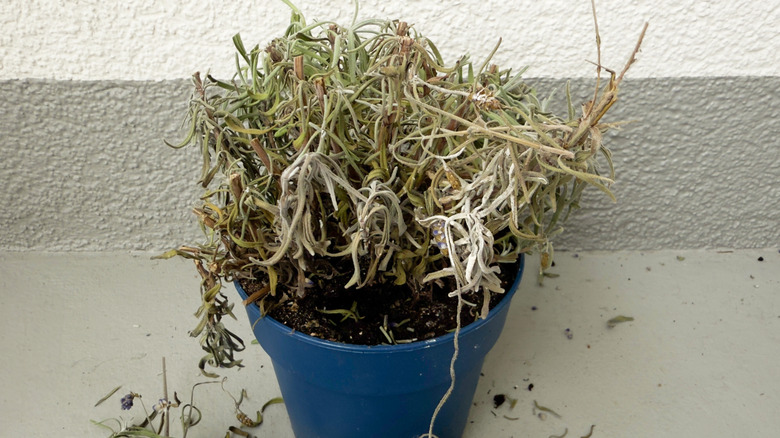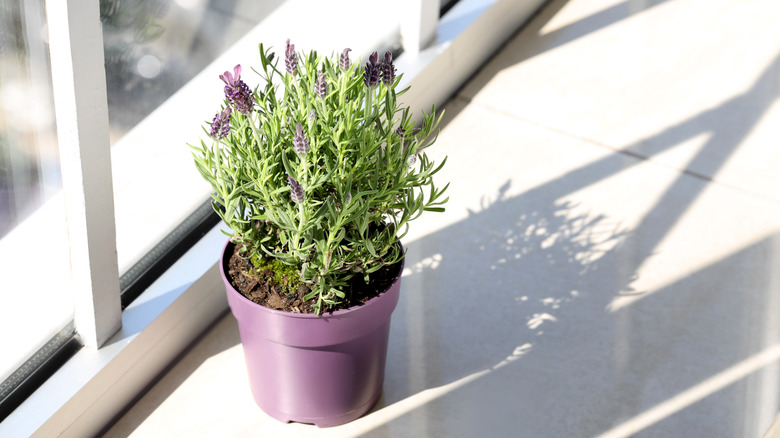Why Your Potted Lavender Plant Is Dying Instead Of Thriving (It's Not Just Water)
With its gorgeous aroma and iconic purple spikes, lavender is a timeless shrub loved by many gardeners. Lavender can be grown easily in pots, containers, and garden beds. It is fairly low-maintenance, but that doesn't mean your lavender will always grow happily. If your potted lavender plant is dying, it can be tempting to give it a good soaking, as shrubs in containers need to be watered more than those in garden beds. However, simply watering your lavender plant may actually do more harm than good. To bring your dying lavender plant back to life, work out what is causing the issue. To do this, it is helpful to reflect on the conditions in which lavender plants thrive.
Lavender needs full sun and well-drained soil on the dry side. If your lavender plant is dying, poke your finger in the potting mix. If the soil feels too wet and is not draining properly, this may be the problem. Lavender is sensitive to root rot, which can occur in potted plants, so check it for any signs of this disease, including wilting, dieback, and foliage discoloration.
Consider other issues that can affect the health of your lavender plant. Is your lavender sitting in the shade? As they need six hours or more of direct sunlight a day, a lack of light may be the problem, especially if you are growing lavender as an indoor houseplant. You should also consider how much you are fertilizing your lavender shrub. They have low nutritional needs, and overfertilizing can make them susceptible to disease and injury. Another reason your lavender is struggling may be cold weather. Although lavender is hardy to USDA Hardiness zones 5 to 8, potted plants suffer more in the winter as their roots are above ground and more exposed.
How to revive a dying lavender potted plant
Once you have determined the cause of its deteriorating health, you can try to bring your dying lavender plant back to life by correcting those issues. If root rot and drainage are the cause of the issue, you need to repot your lavender plant and change its soil. Remove the plant from its pot, wash the soil from its roots, and cut off any slimy roots. Then, repot your lavender in a sterile potting medium, adding coarse materials such as perlite or pumice into it to improve drainage. Placing your lavender in a bigger pot may also be helpful for drainage.
If a lack of sun is the problem, move your plant into a better spot. Move an indoor lavender plant to a south or west-facing window to ensure that it is getting the sunlight it needs to thrive. You should also hold off on the fertilizing if you have been feeding your plants a lot recently — that may help it perk up.
If your lavender plant is dying in the wintertime and you think the cold may be the cause of it, bring it indoors to keep it safe from the weather. A garage or a shed can give it the protection it needs to survive the winter months. However, if the container your lavender is in is too big to move, place mulch on the soil and wrap the pot up with bubble wrap or burlap to help insulate it from the cold.

